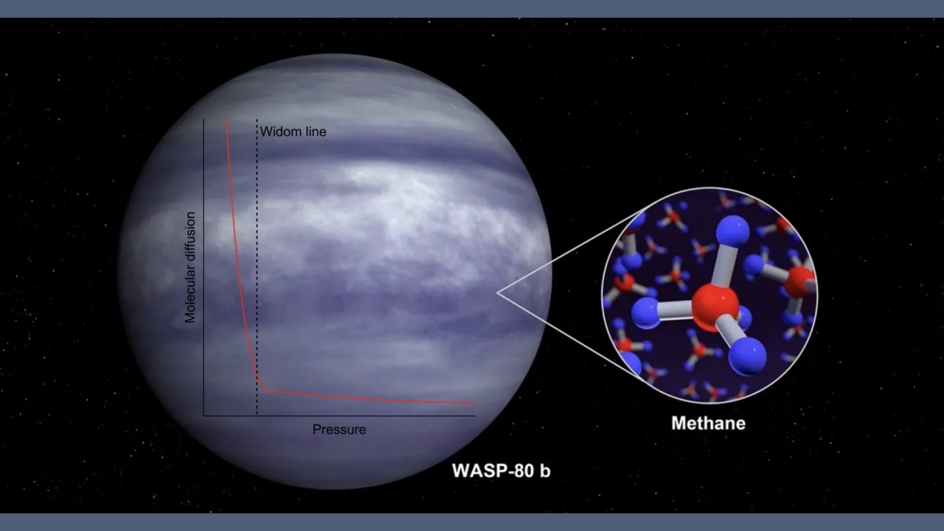In a world where science advances are often related to computer simulations, a groundbreaking experimental study sheds new light on the enigmatic nature of supercritical fluids. A team of international researchers co-led by Dr. Federico Gorelli from HPSTAR unveils unprecedented insights into the behavior of matter pushed beyond its critical point. Published in Nature Communications, their paper, entitled "Crossover from ‘Gas-like’ to ‘Liquid-like’ Molecular Diffusion in a Simple Supercritical Fluid," is a breakthrough for the understanding of these hybrid states of matter.

Transformation in supercritical fluid methane at the Widom line.
The properties of supercritical fluids are unique: they possess the ability to effuse like a gas while they dissolve materials like a highly corrosive liquid. This inherent duality has made them invaluable in a myriad of industrial applications, from pharmaceutical processing to decaffeinating coffee beans. Yet, their significance extends far beyond applications. Understanding the physical behavior of supercritical fluids is the key to unraveling the mysteries of giant planets like Jupiter, Uranus and Saturn, where such states of matter exist.
At the heart of this study lies a fundamental question: can we pinpoint a region of the pressure-temperature (P-T) plane and a physical observable that unequivocally distinguishes between gas-like and liquid-like behavior in supercritical fluids? Previous theoretical and simulation frameworks have proposed various transition boundaries, including the Widom line, the Frenkel line, and the percolation line, but experimental validation has remained elusive until now.
This study explores the dynamics of supercritical fluid methane, by investigating the self-diffusion coefficient, a crucial parameter reflecting the mobility of molecules within the fluid. Through challenging high-pressure quasi-elastic neutron scattering (QENS) experiments on supercritical methane, conducted at the Institut Laue Langevin in Grenoble (ILL), the authors observed a crossover from gas-like to liquid-like behavior in the dynamic structure factor of the fluid, describing all its diffusive properties. The transition between a gas-like Gaussian shape of this physical observable and a liquid-like Lorentzian shape is completed at the Widom line, validating its pivotal role in the supercritical fluid characterization. This gradual transition, devoid of first-order phase characteristics, hints at a heterogeneous mixture of gas-like and liquid-like molecules within a narrow pressure range. However, simplistic models fail to capture the intricate interplay of molecular exchanges and interface contributions, warranting further investigation.
Dr. Gorelli remarks, “Our findings provide a substantial advance in understanding the supercritical fluid dynamics, with obvious implications for planetary science, where similar states of matter may govern the behaviour of gaseous giants and exoplanets. In addition this work provides the missing experimental confirmation of the Widom line model proposed after the first experimental discovery of liquid-like properties in a dense supercritical fluid (Gorelli et al. PRL 2006, https://doi.org/10.1103/PhysRevLett.97.245702), closing in this way the long standing scientific debate between Widom and Frenkel lines.”
